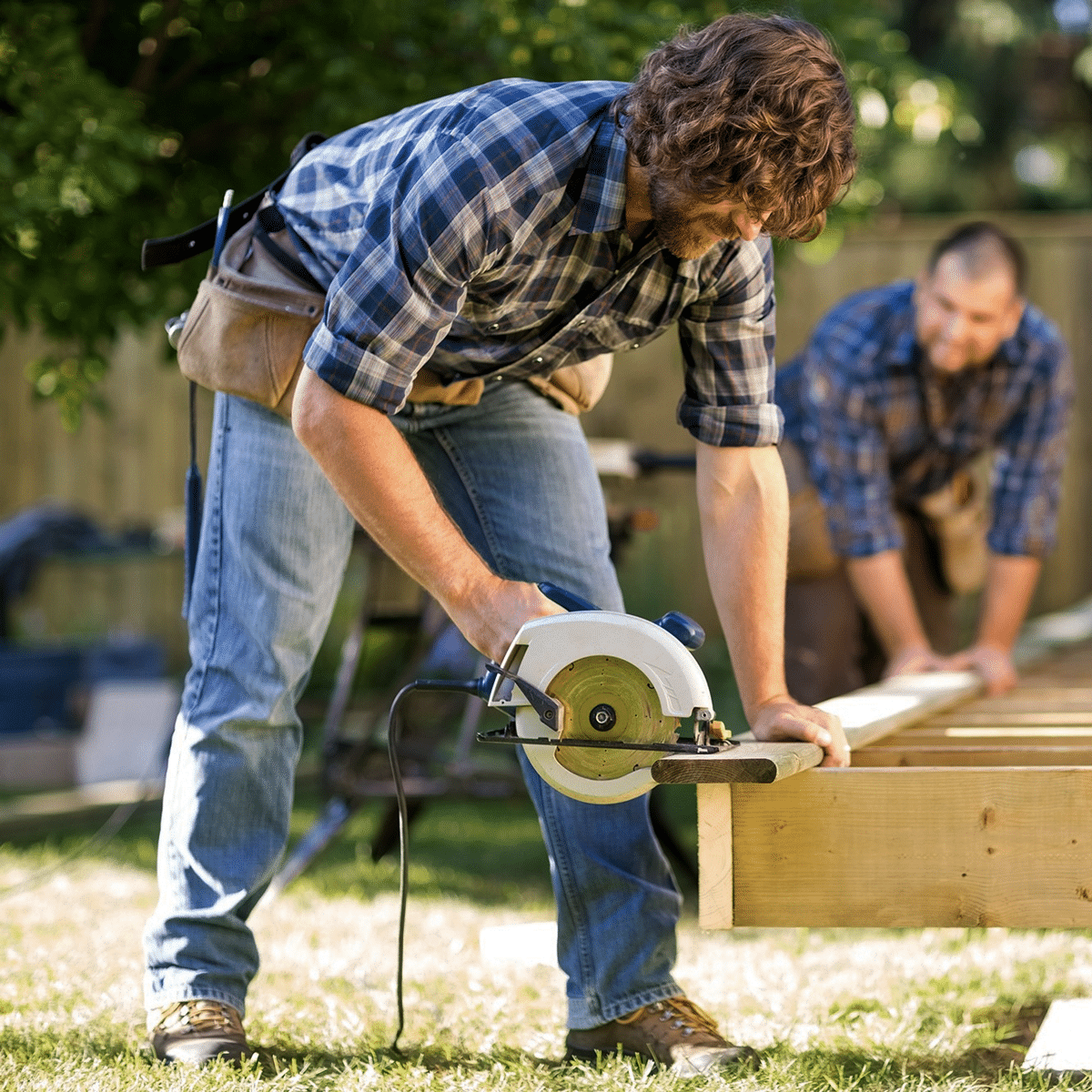The Treated Lumber Checklist Every Contractor Needs
Contractors know that every completed project reflects their professional reputation, and the building materials they select are a big part of that equation. When it comes to pressure-treated lumber, picking the right product for a job is not just a matter of longevity, it is about safeguarding the structural integrity of the build. Using the wrong lumber can lead to risks of rot, warping, or even failure.
Cutting through the confusion helps contractors choose the right pressure-treated lumber for every application, allowing them to build smarter, safer, and stronger.
What Are the Project Requirements?
One of the most important factors to consider is where and how the lumber will be used. Above-ground applications, such as deck boards or railings, typically require a lighter treatment level since they are less exposed to moisture and soil.
In contrast, ground-contact lumber is treated to withstand more intense exposure and should be used wherever the wood touches soil or is within six inches of the ground. Think posts, retaining walls, or bottom deck joists.
For projects near water or in marine environments, contractors will need lumber rated for marine or freshwater use, which undergoes even more rigorous treatment to resist constant moisture, salt, and decay.
Understanding Wood Preservatives: MCA vs. CCA
Micronized Copper Azole (MCA) and Chromated Copper Arsenate (CCA) are among the most widely used preservatives, each offering protection against decay, insects, and moisture.
CCA, a long-standing wood preservative utilized since the 1940s, incorporates chromium, copper, and/or arsenic to protect wood from termites. However, its use has shifted. While once common in residential builds, it is now primarily reserved for industrial purposes such as utility poles, foundation pilings, and marine settings.
MCA is a less harsh, water-based wood preservative containing micronized copper. It is applicable for various interior, exterior, ground contact, and freshwater immersion uses. Culpeper’s MicroPro® technology utilizes MCA for pressure-treated wood for enhanced corrosion resistance and to achieve building code approval more readily for projects including decks, fences, and other general construction.
Grades & Appearances: Choosing the Right Look
Lumber is graded based on its strength and appearance, with common options including #3,#2, #2 Prime, #1, #1 Prime, Select, Premier, Platinum, and CLEAR grades. #3 through #1 Grade lumber ranges from material with large knots and excessive wane to boards that are wane-free with clean edges. For example, #3 Grade may be used for underneath a deck where it would remain less visible, while #1 Grade would be used to meet a higher aesthetic standard. By contrast, CLEAR Grade would be selected by contractors when appearance is priority number one as it is both virtually wane- and knot-free. It is a top choice for high-visibility applications such as high-end interior wall paneling, flooring, furniture, trim, and more.
In addition to grade, the finish of the lumber plays a key role in the final appearance and usability. Rough lumber has a more rustic, textured surface, while smooth lumber is planed for a cleaner look. Other factors such as kiln dried after treatment (KDAT) help reduce shrinkage and warping, improving long-term performance.
Choosing the Right Supplier
The pressure-treated lumber supplier can make just as much of a difference as the product itself. A trustworthy supplier provides consistency, ensuring each shipment meets the same high standards as the last.
Look for vendors who perform regular quality checks, source from reputable mills, utilize a third-party testing agency, and are transparent about treatment types and retention levels. A good supplier does not just sell lumber, they help protect project timelines, budgets, and ultimately the reputation of those using the materials. In essence, they are a partner in a contractor’s success.
That is where suppliers like Culpeper stand out. With a strong reputation for quality control with virtually any and all lumber products in stock, Culpeper makes it easier for contractors to get the right wood at the right time.
Questions and Considerations to Ask The Dealer
It is essential for contractors to have easy access to high-quality, code-compliant treated lumber from a dealer who sources from a trusted treater. Before buying, it is important to ask the right questions to protect both their credibility and the project.
- What is the treatment level? Ensure the lumber is treated to the appropriate retention level for its intended use: above ground, ground contact, or critical structural applications.
- Is the lumber kiln dried after treatment (KDAT)? KDAT lumber is dried in a controlled environment after treatment, which improves stability, reduces shrinkage, and helps coatings adhere better.
- Is there a warranty? A solid warranty from the treater can provide peace of mind and protection should premature failure occur.
- How is the lumber stored? Proper storage (protected from moisture and sun) helps preserve quality and prevents degradation before it even reaches the jobsite.
Jobsite Tips: Installation is Key
Proper installation is crucial to getting the best performance and longevity from treated wood. Whether building a deck, fence, or structural framework, following essential jobsite best practices ensures the project remains strong and aesthetically pleasing for decades.
Sealing Cuts – During installation, newly exposed ends lose the protective treatment applied during manufacturing. To maintain the wood’s resistance to rot and insects, it is essential to seal all fresh cuts. Use a high-quality, brush-on wood preservative specifically designed for treated lumber. This creates a barrier against moisture, ensuring the integrity of the entire structure.
Fasteners – The type of fasteners used significantly impacts the durability of the project. Always opt for hot-dipped galvanized, stainless steel, or other fasteners specifically approved for use with treated lumber. Standard nails and screws can corrode rapidly when in contact with the chemicals in treated wood, leading to rust stains and weakened connections.
Spacing – Proper spacing between boards is vital for several reasons. When installing decking, fencing, or siding, always allow for appropriate gaps between boards. Wood naturally expands and contracts with changes in humidity and temperature. Without adequate spacing, boards can buckle, cup, or crack as they absorb moisture. Typically, a 1/8-inch to 1/4-inch gap is recommended for most applications but always refer to the specific product’s installation guidelines for precise recommendations. This spacing also allows for proper air circulation, which helps prevent moisture buildup and potential rot.
Down to the Details
With pressure-treated lumber, the details matter. From understanding treatment levels and lumber grades to choosing the right supplier and following jobsite best practices, every decision plays a role in the strength, safety, and success of the build.
Source: Culpeper Wood Preservers Read Original HERE



